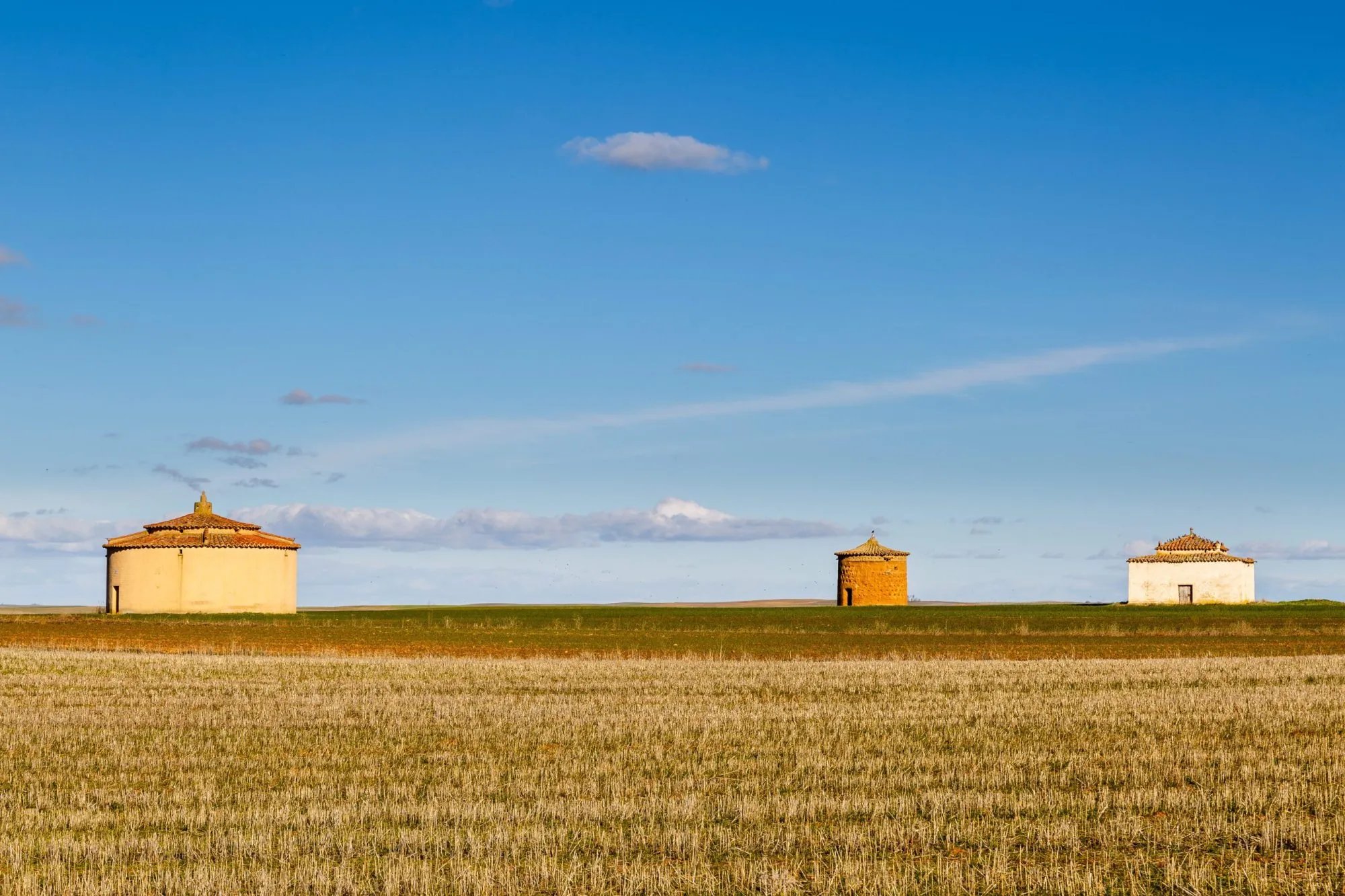Camino Frances: The Ultimate Guide
Explore the historic Camino Frances route with our comprehensive hiking guide, covering history, highlights, terrain, and essential travel tips.

Quick links
The Camino Frances, or the French Way, stands as the most traversed and celebrated route of the Camino de Santiago pilgrimage. Spanning across the diverse landscapes of northern Spain, this historic path offers a blend of rich cultural heritage, architectural marvels, and natural beauty.
Originating from Saint-Jean-Pied-de-Port in France, it winds through renowned cities like Pamplona, Logroño, and Leon, culminating in the sacred city of Santiago de Compostela.

Camino Frances in numbers
- Length: Approximately 790 km (490 miles)
- Starting point: Saint-Jean-Pied-de-Port, France
- Finishing point: Santiago de Compostela, Spain
- How many days does it take: 30-35 days
- Ideal for: Those seeking a traditional pilgrimage experience on the most popular pilgrimage
Historical overview
Camino Frances boasts a rich history dating back to the late 11th century. Its inception is credited to monarchs such as Sancho III the Greater and Sancho Ramirez de Navarra y Aragón, who played a crucial role in its establishment and promotion.
The route became a symbol of European unity and a testament to the historical and cultural exchange that occurred along its paths.
Documented meticulously in the Codex Calixtinus around 1135, the Camino Frances was outlined as a detailed guide for medieval pilgrims.

Attributed to the French cleric Aymeric Picaud, the guide highlighted the political and religious significance of the route while providing practical information for pilgrims journeying to Santiago de Compostela. This codex remains a crucial source for understanding the route's early significance.
Over the centuries, the route faced periods of decline due to political and religious upheavals across Europe. However, renewed interest emerged in the late 19th century, leading to a resurgence in the 20th century.
The efforts of figures like Elias Valiña, a parish priest of O Cebreiro, were pivotal in rediscovering, restoring, and revitalizing this ancient trail.

Today, the Camino Frances is recognized not only as a crucial part of Christian heritage but also as a cultural and historical treasure, reflecting the diverse stories and experiences of pilgrims throughout the ages.
Its inclusion in the UNESCO World Heritage List and designation as the first European Cultural Route by the Council of Europe in 1987 further cement its status as a path of great historical and cultural significance.
Highlights
Burgos Cathedral
A masterpiece of Gothic architecture, the Burgos Cathedral is a UNESCO World Heritage Site. Founded in 1221, its construction and design reflect the evolution of Gothic art over the centuries. The cathedral is renowned for its vast size, unique architecture, and the tomb of El Cid, an 11th-century military leader.

Santa María la Real de O Cebreiro
This church, founded in 836, is one of the oldest on the Camino Frances. It's famous for its association with the Miracle of the Eucharist and houses a 12th-century chalice and reliquary linked to this event.

San Martín de Frómista
Located in the province of Palencia, this church is one of the finest examples of Romanesque architecture along the Camino. Built in the 11th century, it's known for its harmonious proportions and well-preserved stone carvings.

Santa María de León Cathedral
Often referred to as The House of Light, this stunning example of French-style Gothic architecture boasts some of Spain's most impressive stained glass windows, offering a spiritual and visual feast to pilgrims and visitors.

Monastery of San Juan de Ortega
Founded by the 12th-century saint San Juan de Ortega, this monastery is a significant historical and religious site. It's renowned for its Chapel of the Holy Sepulchre and the 'Miracle of Light,' a unique architectural feature where sunlight aligns perfectly with the capital of the Annunciation during the equinoxes.

Terrain and difficulty
The Camino Frances takes pilgrims through a diverse array of terrains, each offering its own level of challenge. The journey begins with the demanding ascents and descents of the Pyrenees Mountains at Saint-Jean-Pied-de-Port, testing the endurance of pilgrims right from the start.
As the path progresses, it softens into the rolling hills and vineyards of La Rioja and then opens into the vast, flat landscapes of the Meseta. Approaching Galicia, the terrain becomes more varied, with undulating rural paths and forested areas.

Although the Camino Frances is considered to be of medium difficulty overall, the initial stage is notably challenging due to steep climbs.
However, after this initial test, the route becomes more forgiving and suitable for beginners and those with moderate fitness levels. Pilgrims typically walk an average of 20-30 kilometers per day, traversing a mix of dirt tracks, gravel paths, and country roads.
The route is well-marked, easing navigation through the diverse landscapes. This balance of challenging and more manageable sections makes the Camino Frances an accessible journey for most walkers, provided they have prepared adequately.

If you’re searching for information on preparation for Camino Frances and access to a packing list, visit our comprehensive Camino de Santiago guide.
Infrastructure
The Camino Frances boasts an impressive infrastructure, significantly enhancing the convenience and accessibility of the pilgrimage.
Accommodation options along the route are plentiful, ranging from traditional pilgrim hostels known as albergues to private hostels, hotels, and guesthouses, catering to various preferences and budgets.

These accommodations are complemented by several food and supply stores, including convenience stores and restaurants offering special pilgrim menus.
If you wish to read about accommodations and food on Camino de Santiago in more detail, you can visit our comprehensive Camino de Santiago guide.
The route is distinctly marked with yellow arrows and scallop shell symbols, ensuring easy navigation. Along the way, pilgrims have access to basic medical services in larger towns, and many albergues provide first aid for minor ailments. Water fountains are strategically placed along the path, ensuring pilgrims can easily stay hydrated.

In terms of connectivity, Wi-Fi is widely available in most accommodations and public spaces, allowing pilgrims to stay in touch with family and friends.
Additionally, the availability of public transportation in major towns provides flexibility for pilgrims who may need to skip sections or arrange transport back home.
How to get to the starting point?
Saint-Jean-Pied-de-Port, a picturesque town nestled in the French Pyrenees, is the traditional starting point of the Camino Frances. This historic town, with its cobbled streets and medieval architecture, lies close to the border of France and Spain, making it accessible from both countries.

By Air
The closest airports are Biarritz in France, about 50 km away, and Pamplona or Bilbao in Spain. From these airports, travelers can take a combination of buses or trains or arrange private transfers to Saint-Jean-Pied-de-Port.
By Train
For those coming from within France, there are train services from Paris to Bayonne. From Bayonne, a local train connects directly to Saint-Jean-Pied-de-Port. This scenic train journey offers a glimpse into the beautiful French countryside.
By Bus
Various bus services operate from Spanish cities like Pamplona, offering direct routes to Saint-Jean-Pied-de-Port. This option is often preferred for its cost-effectiveness and direct connections.
By Car
Renting a car provides flexibility, especially for those traveling from further away or with more luggage. However, parking in Saint-Jean-Pied-de-Port can be challenging during peak pilgrimage seasons, so it's advisable to plan accordingly.

Overall, reaching Saint-Jean-Pied-de-Port requires some planning, particularly for those coming from outside Europe. Its location offers an immersive start to the Camino Frances, setting the stage for the journey ahead.
Now you know how to go, but do you also want to know when? We’ve explored the best time to visit the Camino de Santiago in more detail in our comprehensive Camino de Santiago guide.
Our Camino Frances tours
For those seeking a more structured and hassle-free Camino Frances experience, traveling with a hiking agency can be an excellent option. Agencies offer a range of services, including pre-arranged accommodations, luggage transfers, and detailed route guides.
You can explore our Camino Frances tours to find a package that suits your needs. Our services are designed to enhance your pilgrimage, ensuring a memorable and fulfilling journey on the Camino Frances.

HASSLE-FREE
We handle itineraries, accommodations, and anything else you prefer not to deal with, so you can enjoy a carefree hike.
.svg)
TRIED & TESTED ADVENTURES
Only the best of Camino de Santiago, cherry-picked by our local team with an in-depth knowledge of the region.

SELF-GUIDED TRAVEL
Explore independently and with confidence while we keep everything running from behind the scenes.
TRUSTED BY MANY
Since 2014, we have taken care of thousands of happy customers, making it our mission to put your satisfaction first.

